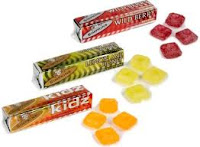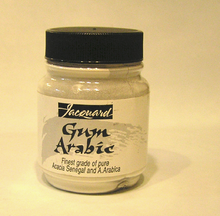1. GUM ARABIC VEGETATION
Strangely, Gum Arabic is only produced by trees that are in an unhealthy condition. Gum yields are improved by natural factors that lessen the vitality of the trees – hot weather, poor soil, lack of moisture, etc.
It is important to remember that a damaged tree will give a larger yield of gum. Thus, the natives will cut and strip the bark from a tree and return later to remove the tears of gum that form in the wounds or scars.
Within 3 - 8 weeks, the gum will start to collect in the wound, but this depends on the weather conditions. Gum droplets are about 0.75 - 3 inches in diameter, and they gradually dry and harden on exposure to the atmosphere. A young tree will yield 400 - 7000g annually.
The dry season lasts from October to June and the gum is collected every 10 days. During the rainy season no gum is formed since the trees are in full bloom. After collection, the gum is brought from the farms and stands to villages. From there it’s transported to market. In the Sudan, the gum is auctioned (under government supervision) and this usually sets the world price.
2. POST-HARVEST HANDLING
At present little cleaning or sorting is undertaken by the producer (collector) of the gum. Some degree of cleaning and sorting may be undertaken by small village traders to whom the producer sells his gum, but it is usually undertaken by the large traders after it has been sold and prior to selling it to the Gum Arabic Company (GAC). If the GAC buys the gum, it cleans and sorts at its own warehouses in the regional centres of the gum belt.
On arrival at the GAC depot at Port Sudan, every consignment of GUM HASHAB is re-cleaned, sorted and graded in preparation for export.
After collection, the gum is brought back to the villages, and when there is a sufficient quantity, it is transported to warehouses.
3. CLEANING PROCESS
Prior to sale, there is a basic cleaning process. This cleaning process is labour intensive and includes such methods as:
• Crude sieving
• Hand selection
• Hand grading and picking of bark etc
The main purpose of this cleaning process is the removal of sand, bark and any extraneous material.
4. GRADING PROCESS
The subsequent phase involves grading into the following grades/qualities of Sudanese gum on the basis of colour, clarity and cleanliness:
1. Hand picked selected or HPS (selected sorts) - This ensure a pale uniform colour and freedom from extraneous material.
2. Cleaned and sifted (cleaned sifted sort) - This is what is left after the hand picked selected is taken away and the siftings are removed.
3. Cleaned (cleaned amber sorts) - This is the standard grade used throughout the world. Here, siftings are still present, but the dust is removed.
4. Siftings - This is the material originated from the production of cleaned and sifted. It comprises of fine particles of gum with a proportion of fine bark and sand.
5. Dust - This is produced from the cleaning process. It comprises of very fine particles of gum, sand and clay/earth.
Different grading systems are used in other exporting countries, and although Sudanese production is more tightly controlled, good quality Nigerian or Chadian grades from reputable dealers can match Sudanese material.














